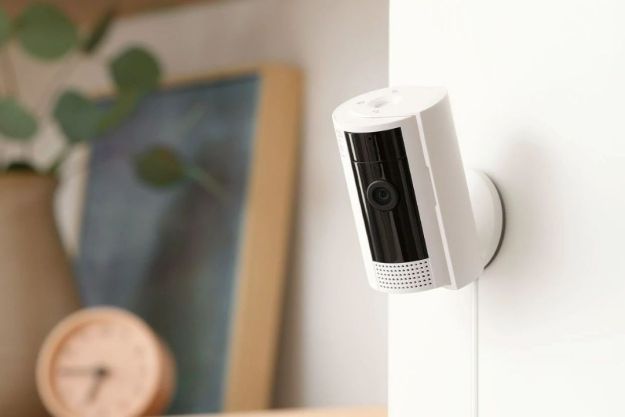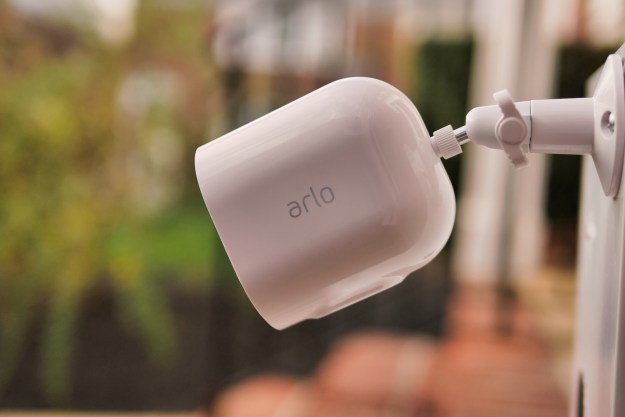Smart security cameras can store and stream incredibly high-resolution video to help you keep an eye on what’s happening around your home. The stored video means you can look back at activity from throughout the day, especially if the camera caught motion while you were away from your phone.
Local storage comes with a host of benefits, but you will typically need a MicroSD card. The question becomes what size do you need, as well as how much footage you intend to store. Different cameras store footage at different levels, but there are several things you need to consider.
Resolution vs. time
When deciding how much storage capacity you need, you first need to consider resolution and recording length.
Lower-resolution video takes up less memory than high-resolution footage, but at the expense of clarity. The most common resolutions for modern security cameras are 1080p, 1440p (called 2K), and 4K. You can make out more details in a 2K video than you can in 1080p footage, and you can make out even more details in 4K video footage. Depending on the brand, you might have the option to store footage at a lower resolution to conserve space on your memory card.

By default, most cameras record individual events. Your camera will begin recording as soon as it detects motion and continue recording until the activity stops. In most cases, this footage is 30 seconds to two minutes long.
Many security cameras, however, also offer the option for continuous recording. You will still get notifications of activity and motion around your home, but it will record every minute of every day. Of course, this option demands significantly more storage than event recording.
Frame rate
Another major consideration is frame rate. Video taken at 30 frames per second (fps) requires less space than video taken at 60 fps. While not all cameras allow you to adjust the fps of recordings, you will receive better footage from a higher frame rate, which can be affected by the lighting condition. For example, some cameras will purposely shoot at a slower 15 fps rate because of lowlight conditions, while reverting to their default (typically 30 fps) when lighting is sufficient.
On the other hand, if you choose to record at maximum resolution and the highest possible frame rate, your storage requirements will be astronomical — far beyond what a standard SD card can provide. At that point, you may want to consider a security camera that offers network-attached storage (NAS) as an option because you’ll be able to attach an external hard drive, like the Western Digital My Passport.
Codec and compression
A codec is a type of encoding software that translates the digital footage into a language the computer can read and store. There are numerous kinds of codecs, and each stores video and audio at a slightly different rate and at different storage sizes. A couple of examples of codecs are H.264 and HEVC.

Compression is another consideration. Video is not stored at its full size. In most cases, it is “compressed” in order to take up less space on a memory card or hard drive. The compression algorithm used by your security camera plays a large role in how much memory footage requires.
How much space does video footage from a security camera take up?
We tested various cameras to find out, on average, how much storage space video footage would take up.
On the Eufy 2K Pan & Tilt camera, one minute of 2K resolution footage took up roughly 40MB of space. Extrapolated out, that’s around 2.4GB per hour, and about 57.6GB per day if you opt for continuous recording.

However, if you prefer event recording — and you assume six events per day, with two minutes of recording each — that’s only 480MB per day.
The Wyze Cam Outdoor, on the other hand, stores files at much lower sizes. One minute of video requires roughly 5MB of storage space, while a 30-minute video would require 225MB of space. If you assume 450MB for one hour of video, then a day’s worth of footage is around 10.8 GB.
Assume that 4K video will more than double the storage requirements, while 1080p will roughly halve the amount of space you need.
What size storage should you buy?
While you can invest in MicroSD and SD cards up to 1TB in size, that might be a bit overkill depending on your intentions. In most cases, a 256GB memory card will be enough for several days’ worth of footage. Even with the larger capacity requirements of the Eufy, a 256GB memory card will store around 4.5 days’ worth of footage if you record continuously.

The vast majority of security cameras use rolling storage, which means the oldest footage is erased and replaced when the card fills up. In most cases, you do not need to manually erase your footage to make room for more. If you want to archive clips, then you’ll want to look into a system that offers the option to attach an external hard drive. They’re more affordable when you look at the cost per gigabyte rate, which makes them more cost efficient if you intend on storing all your footage for a long period of time. Options include Western Digital’s My Passport line of external hard drives, which are available in 1TB to 5TB capacities.
One concern about using local storage options is the possibility of their failure, just because everything eventually goes bad due to wear and tear. Hard drives and memory cards are no exception, but companies like Western Digital offer recovery services that can potentially rescue footage that would otherwise be lost.
Editors' Recommendations
- SimpliSafe is now using AI to prevent burglars from entering your home
- The TP-Link Tapo C120 is an affordable security camera designed for all environments
- Philips Hue adds support for cameras and sensors
- SimpliSafe now offers live home monitoring with new Smart Alarm Wireless Indoor Security Camera
- The Wyze Cam Floodlight Pro is a premium outdoor camera with tons of AI features




